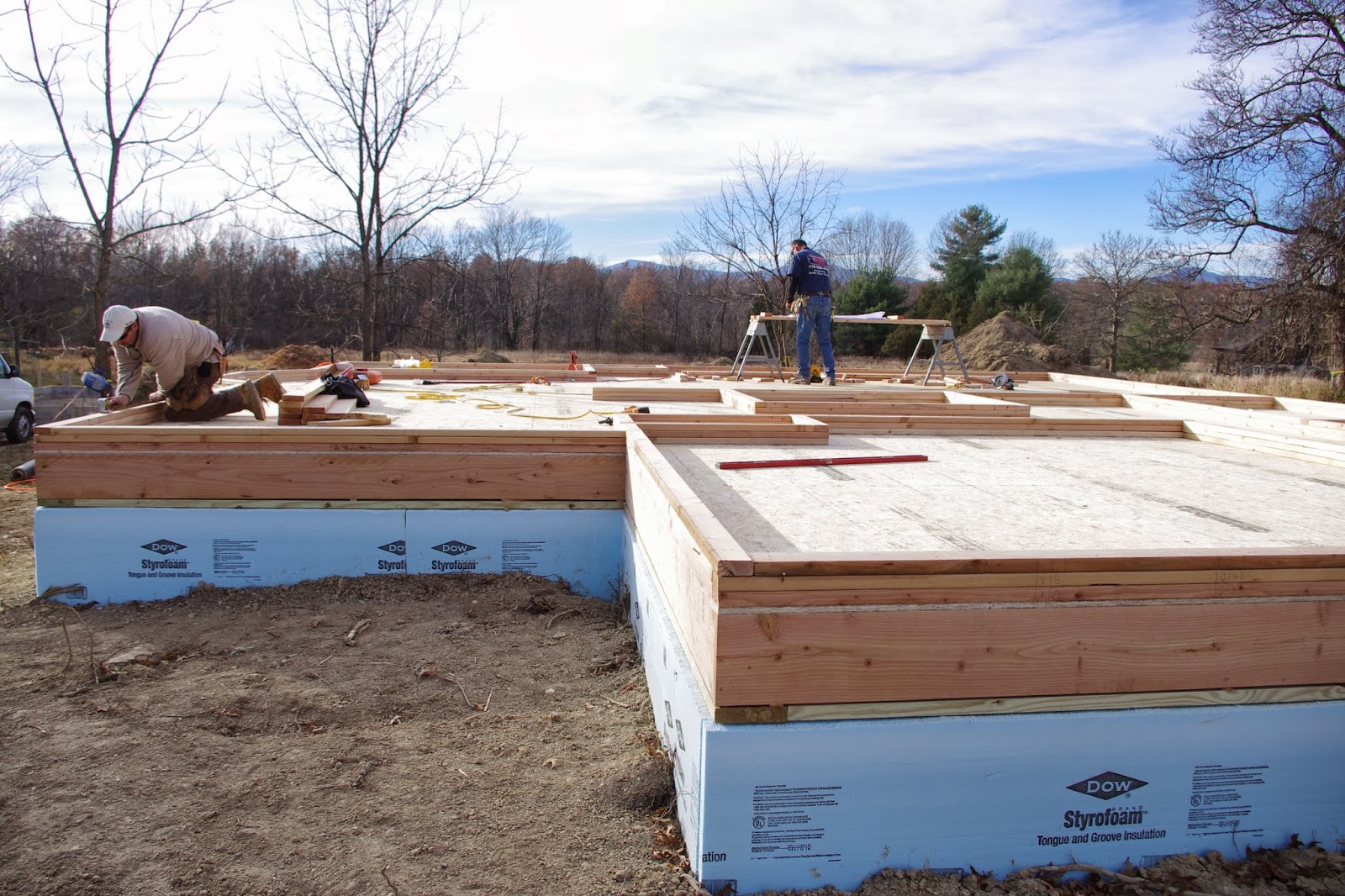So far the construction has been all about moving dirt and pouring concrete, but this morning, the excavator back-filled the soil around the foundation, loaded up his machine, and drove off. The lumber yard made it's first delivery of wood to the site and the framers arrived to start building on top of the foundation that has been constructed.
First Scott connected a heavy duty wire into the electrical panel in our basement, and ran electricity next door for their tools. This was decided upon so using noisy, expensive, gas-powered generators could be avoided.
 |
| shims ensure a square and level floor |
They worked to clean up the top of the concrete foundation wall with a broom. They rolled out foam sill sealer that acts as a barrier between the concrete below and wood above. They drilled and installed the 2x8 sill plate, which is the first piece of wood placed onto the foundation and is pressure treated for that reason. Pressure treated wood can resist moisture better than regular wood, and concrete in the ground can wick moisture, hence the treated sill and the foam it sits on where the two materials meet. The bolts sticking out out of the top of the foundation wall go through the sill plate and nuts secure the foundation and wood together.
Next the rim joist was installed around the perimeter. This is a 2x10 on edge (it is whatever size the floor joists will be). All this work is really precise, with the guys checking the diagonals often to be sure the base of the building is square, using a laser level and shims to adjust when needed to make the top of floor level.
After the rim joist was installed all the way around the perimeter, the first center girder was installed. In this case, it's an LVL -engineered lumber - stands for "laminated veneer lumber" and in the photo it is more a medium brown than the dimensional lumber, which looks almost white. The girder sits in the beam pockets in the concrete walls and is supported in the middle on concrete filled steel columns (that are red) that rest on the thickened footings that were poured with the slab floor. The girder is what holds up the floor joists, and this afternoon before they left for the day, they had installed a few floor joists that rest on that LVL and cantilever out over the foundation wall to create a bay window in the dining area.
 |
| cantilevered floor joists |



















